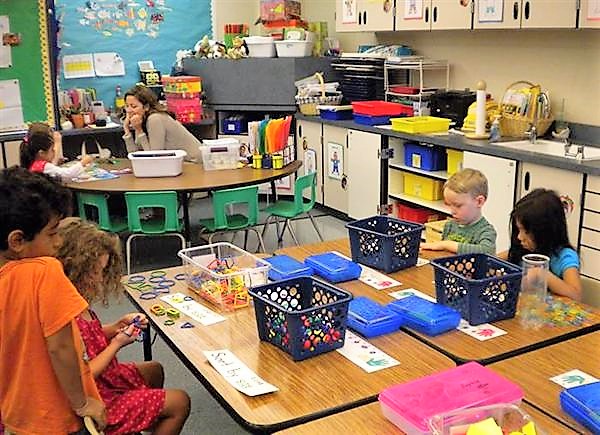With the expansion of Universal Prekindergarten (UPK) underway in schools and districts across the state, the California County Superintendents have released First Steps to Math Success: Guidance for Teaching Mathematics in Transitional Kindergarten, guidance that describes the components conditions necessary to support joyful, robust foundational learning in mathematics for the state’s youngest learners.
“Leaders and partners must be mindful that learning and discovering can change dramatically as children develop from ages 48 to 72 months. Therefore, the Prekindergarten math program should reflect and respond to learners’ developmental stages,” the report states. “Throughout a child’s UPK experience, they should continually be provided with opportunities to develop their sense of agency, to productively struggle with math concepts, and to begin to gain a sense that they are capable mathematicians. Helping students develop a positive mathematical disposition is a key focus of early mathematics. To this end, mathematical experiences in UPK must be grounded in play and exploration.”
Benefits of early math experience
While it may seem like child’s play, authors of the brief noted and any serious effort to close the achievement gap needs to include, if not focus on, children before school entry.
“Even though young children acquire some arithmetic skills naturally through their interactions with the world around them, they benefit greatly from high-quality math instruction before they enter kindergarten,” according to the brief. “Children who enter kindergarten with strong math knowledge have higher math and reading achievement at the end of elementary school than children who enter kindergarten with weak math skills. Young children learn math best through a combination of play-based, everyday experiences as well as structured, age-appropriate learning activities.”
Research shows that the math proficiency children develop before entering elementary school is critical to later academic achievement, even proving beneficial in reading and rates of high school graduation. On the other hand, children who begin school with poor math skills typically do not catch up, according to the brief. A 2017 study of California’s transitional Kindergarten program by the American Institute of Research found that children who completed TK had stronger skills in math and literacy when they started kindergarten and were more engaged in learning than their peers who didn’t participate in the program. Such benefits were especially pronounced for English learners and low-income students.
Recommendations
The recommendations in the brief are meant to provide educators information about topics to delay or discontinue in preschool and TK in order to ensure a smooth bridge between mathematics in preschool and the elementary grades.
For instance, when it comes to counting and operations, the brief notes that counting collections of objects and representing math stories with objects are valuable experiences for preschool and TK students. However, the emphasis at this stage of inquiry should be on exploring and representing situations involving operations rather than formal symbolic use. Therefore, child-directed counting of objects or adults posing “What if?” questions around combining and reducing groups and objects should be commonplace in the classroom, while things like symbolic notation of expressions and equations or an emphasis on the naming and writing of numerals vs. exploring quantities can be delayed until K-2.
And as the brief notes, it is crucial that teachers help extend and make explicit students’ ideas about spatial relations through activities and a variety of play based approaches. Although spatial relations are necessary for later understanding of geometric and algebraic concepts, the California Common Core Standards for Mathematics emphasize student learning of attributes, while students develop formal language for shapes K-5.
That means memorization of formal names of shapes or formal language related to attributes of geometric figures (i.e. vertical line, right angle) can wait until a child enters K-2, but pre-K teachers can emphasize students describing objects using spatial language, student-directed building of shapes from smaller shapes and more.
Other topics explored include measurement and data, patterns and Algebra, and play, which can be self-determined by the child, adult-planned or directed, or a collaboration. Research has long shown play is an essential element of healthy development for children of all ages and influences all areas of development by providing children the opportunity to learn about themselves and others.
“Play has many benefits that correlate specifically with mathematics. Through play with objects, such as blocks, sand, balls, crayons, and paper, children practice mathematical skills such as measurement, quantification, classification, counting, ordering, and part-whole relations,” the brief states.





